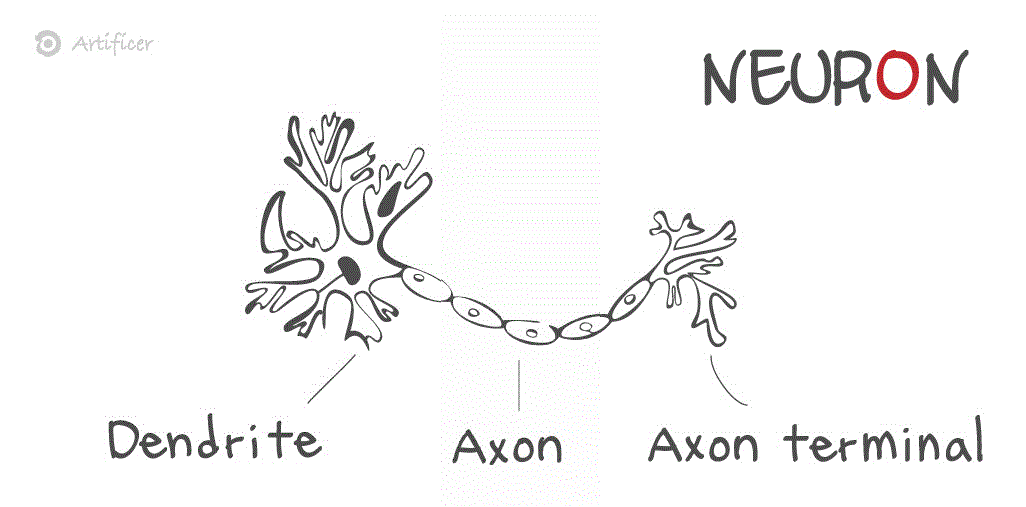Luigi Galvani was an Italian physician and physicist. In 1771, he observed that the muscles of a dead frog twitched when struck by electric current generated from a Leyden Jar or Rotating Static Electricity Generator. Further experiments by using different metals to touch the frog leg also resulted in the same twitch. This led to his conclusion that living creatures have the inherent ability of bioelectricity and this opened the gates to the field of study of Bioelectricity and the rudimentary studies of how our nerves transmit impulses in our bodies.
One neuron ( also called a nerve cell), is a cell that can be stimulated by electric impulses. It has the ability to transmit actions via electrical or chemical stimuli. Neurons will link together with other neurons to form a neural network. One neuron is composed of three parts—Dendrite, Axon and Axon Terminal. When the Dendrite receives stimulus matter from the terminal ends of the previous neuron, it will transform this stimulus into an electrical impulse which travels down the Axon to the Axon Terminal and cause a Synapse which releases neurotransmitters which will react and stimulate the next neuron’s dendrite. In this way, the stimulus is transferred along the neurons until it reaches our brain (or vice versa, from the brain to muscles or other organs).

The cells within the neuron use electricity to transmit their impulses. This is accomplished by utilizing the chemical potential existing across the cell membrane of the Axon. In a Resting State, the outside of the membrane has a high concentration of Sodium ions (Na+) and the inside has a concentration of Potassium ions (K+) which results in a lower potential charge on the inside of the membrane. When the neuron receives a stimulus which reaches threshold, the sodium ion channels located on the Axon membrane will open up allowing sodium ions to flow into the inside of the membrane thus increasing the electrical potential of the inside of the membrane. This action will stimulate more sodium ion channels to open up and allow more sodium to cross into the inside of the membrane. Before the membrane potential reaches its peak, the potassium channels will open up and allow flow of potassium out into the outer membrane to counter act the inflow of sodium and to reduce the electrical potential across the membrane until the resting state potential is reached again. If the stimulus received by the neuron is not large enough to cause threshold, no ion channels will open up to effect an Action Potential and we will not feel anything; anesthesia utilizes this theory of blocking action potentials to subdue or cause a sensation of no pain.

After rigorous activity that cause us to sweat profusely or due to other conditions such as pregnancy when there is an imbalance in our body’s ion concentrations, we succumb to muscle cramps easier. The majority of the time, this can be attributed to a deficiency of sodium or potassium ions which, in turn, disrupts the normal resting potential of our neuron’s membrane and causes frequent muscle cramps. Therefore, for people that partake in rigorous activities such as Triathlons, long bike rides or marathons, you will often see these athletes replenish themselves with large amounts of potassium by eating bananas or consuming large amounts of sports drinks.
BIOELECTRICITY – THE NERVE IMPULSE TRANSMITTED WITHIN
More About Bioelectricity>>>




